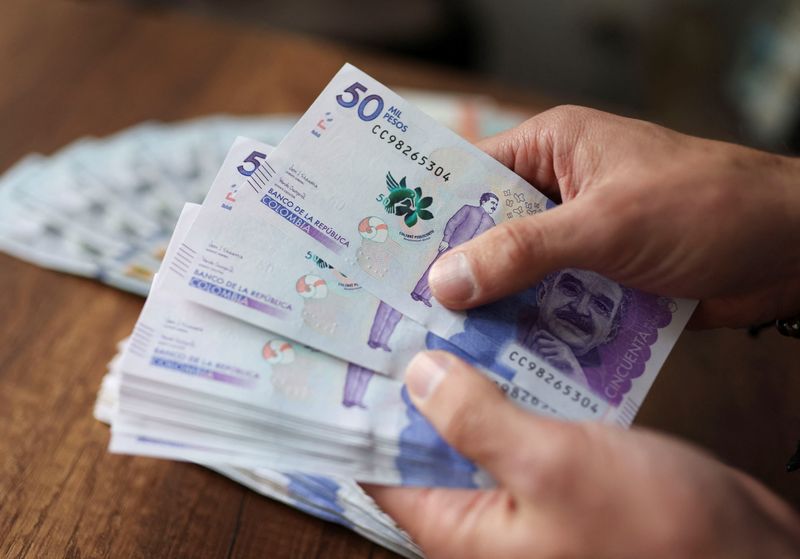By Gabriel Burin
BUENOS AIRES (Reuters) - Colombia's peso will likely stay weak on signs the central bank is turning to a wait-and-see approach on interest rates, combined with downside pressures from the currency's mismatch against oil prices, a Reuters poll showed.
The Andean nation's currency is set to trade at 4,800 per U.S. dollar at end-June, 4.2% softer than 4,600 on Monday, according to the median estimate of 24 foreign exchange strategists polled March 31-April 4.
The peso was one of the worst-performing currencies in the world last year, losing a fifth of its value as investors fretted about President Gustavo Petro's push for changes after his victory in June's presidential runoff vote.
Officials at BanRep, as the central bank is known, last week raised the benchmark rate by 25 basis points to 13.0%, a more than 20-year high. "If March inflation behaves as expected, they suggested this could be the last hike," J.P. Morgan analysts wrote in a report.
"Still, they remain data dependent. We think this supports our underweight (view) for the peso, which has also decoupled from lower oil prices these past few weeks and offers good entry levels for shorts."
"Shorting", or betting against an asset on expectations its price will fall in the near future, was a winning strategy last year for investors and speculators who called the peso's decline amid Petro's reform drive to fight inequality.
The currency has fared poorly for months even while Colombia's central bank conducted an aggressive tightening cycle that added 1,125 basis points in rate increments since a pandemic-time low of 1.75%.
Consumer prices rose at a yearly clip of 13.3% in February, the fastest since 1999 and more than four times the bank's long-term target of 3%. But now inflation seems to have peaked, BanRep may well pause.
Also, despite its falling trend, a recent uptick in the peso has left it relatively overvalued versus oil market prices that remain more than 30% below the highs of the first days of Russia's invasion of Ukraine, despite this week's recovery. Oil is one of Colombia's top exports.
The peso is up 5.4% since the start of 2023, outperforming the Brazilian real's 4.5% gain, yet below Mexico's peso advance of 7.8%, as sentiment over the direction of policy-making in Latin America's No.1 and 2 economies keeps diverging.
All three currencies are seen taking losses in one year - a 2.1% fall in the case of Colombia's peso, 2.7% in Brazil's unit and 6.0% for the Mexican currency, which in recent years has nevertheless confounded analysts' pessimism.
(For other stories from the April Reuters foreign exchange poll:)
(Reporting and polling by Gabriel Burin in Buenos Aires; additional polling by Prerana Bhat and Indradip Ghosh in Bengaluru; Editing by Sharon Singleton)
